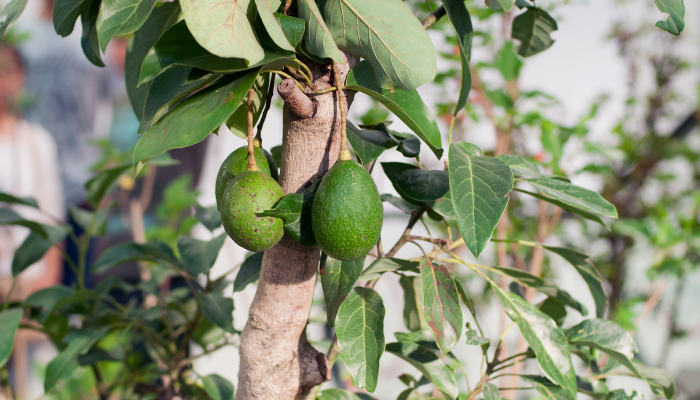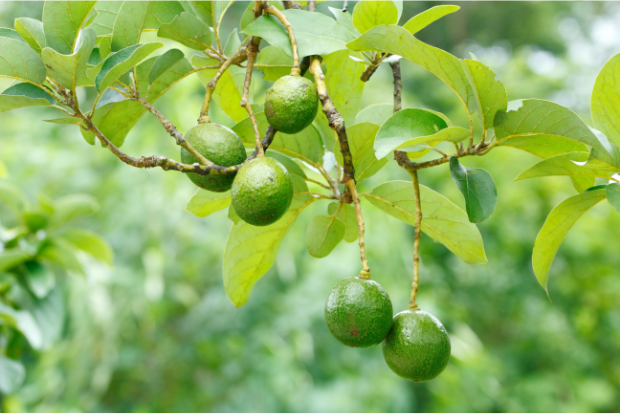Planting and propagating avocado trees

The content of this article 'Planting and propagating avocado trees' was prepared by Jonthan H. Crane, Carlos F. Balerdi, and Ian Maguire of the University of Florida and has been revised and republished by FreshFruitPortal.com.
West Indian and some hybrid avocado varieties are best adapted to a lowland tropical climate and relatively frost-free areas of the subtropics.
Mexican varieties are more cold-tolerant and not well-adapted to lowland tropical conditions. Guatemalan x Mexican hybrids are generally more cold-tolerant than West Indian x Guatemalan hybrid varieties.
In general, avocados should be planted in the warmest areas of the State, i.e., along the southeast and southwest coasts of Florida.
Propagation
Most avocado varieties do not come true from seed (i.e., a seed will not render the same variety), so they must be propagated vegetatively (Figures 7 and 8).
Cleft grafting is the preferred method of propagation in Florida, although veneer grafting is also used.
Young, vigorously growing seedlings are used for rootstocks, and terminals of leafy shoots are used for scion material.
Grafting is most successful during the cooler months from November through February or March but can be done from June through March if plant material is available.
Established trees may be top-worked by cleft or veneer grafting scions of the desired varieties on stumps of cut-back trees or by veneer grafting new shoots arising from stumped trees.
Propagation by cuttings and air-layering has not been successful.
Typically, seedlings of 'Lula' and 'Waldin' are used as rootstocks in Florida because of their uniformity, vigor, and availability of seeds.
Figure 7. Recent avocado veneer graft.
Figure 8. Top-worked mature avocado tree, showing healed veneer graft.
Production
Less than 1% of the flowers on an avocado tree ultimately produce fruit. Some varieties set a large number of fruit, most of which drop (fall) during early summer, while others set fewer fruit but retain most of them to maturity.
Varieties differ in productivity and in regularity of bearing, some producing a large crop only every other year.
Trees that are under a good cultural program (i.e., fertilized and watered) have less of a tendency to alternately bear.
However, with good management, considerably better production can be expected. Avocado varieties in Florida mature from June to March.
Planting more than one variety will prolong the avocado season from the home landscape.
Soils
Continuously wet or flooded conditions often result in decreased growth and yields, nutrient deficiency symptoms, dieback, and sometimes tree death.
Under these conditions, trees are highly susceptible to root infection by Phytophthora fungi.
In the home landscape, select an area that does not flood. If there is a potential for excessively wet or flooded soil conditions plant on a large hill or mound made up of native soil, 2 to 4 ft high (0.6 to 1.2 m) by 4 to 6 ft diameter (1.2 to 1.8 m).
Planting an avocado tree
The first step is to choose a healthy nursery tree. Commonly, nursery avocado trees are grown in 3-gallon containers and these trees stand 2 to 4 ft from the soil media.
Large trees in smaller containers should be avoided as the root system may be "root bound". This means all the available space in the container has been filled with roots to the point that the taproot is growing along the edge of the container in a circular fashion.
Rootbound trees may not grow properly once planted in the ground. Inspect the tree for insect pests and diseases and inspect the trunk of the tree for wounds and constrictions. Select a healthy tree and water it regularly in preparation for planting in the ground.
Site selection
In general, avocado trees should be planted in full sun for best growth and fruit production.
Select a part of the landscape away from other trees, buildings and structures and powerlines.
Remember avocado trees can become very large if not pruned to contain their size. Select the warmest area of the landscape that does not flood (or remain wet) after typical summer rainfall events.
Planting in sandy soil
Prior to digging a hole, remove a 3 to 10 ft diameter ring of grass sod.
Dig a hole 3 to 4 times the diameter and 3 times as deep as the container the avocado tree has come in.
Making a large hole loosens the soil adjacent to the new tree making it easy for the roots to expand into the adjacent soil.
It is not necessary to apply fertilizer, topsoil, or compost to the hole. In fact, placing topsoil or compost in the hole first and then planting on top of it is not desirable.
Backfill the hole with some of the native soil removed to make the hole.
Carefully remove the tree from the container and place it in the hole so that the top of the soil media of the container is level with or slightly above the surrounding soil level.
Fill soil in around the tree roots and tamp slightly to remove air pockets. Immediately water the soil around the tree and tree roots. Staking the tree with a wooden or bamboo stake is optional.
However, do not use wire or nylon rope to tie the tree to the stake as they may eventually damage the tree trunk as it grows. Use a cotton or natural fiber string that will degrade slowly.
Planting in rockland soil
Many areas in Miami-Dade County have very shallow soil and several inches below the soil surface is a hard calcareous bedrock.
Remove a 3 to 10 ft diameter ring of grass sod. Make a hole 3 to 4 times the diameter and 3 times as deep as the container the avocado tree has come in.
To dig a hole there are several options: use a pick and or a digging bar to break up the rock or contract with a company that has augering equipment or use a backhoe. Plant as directed in the proceeding section for sandy soil.
Planting on a mound
Many areas in Florida are within 7 ft or so of the water table and experience occasional flooding after heavy rainfall events.
To improve plant survival, consider planting fruit trees on a 2 to 3 ft high by 4 to 10 ft diameter mound of native soil.
In areas where the bedrock nearly comes to the surface (rockland soil) follow the recommendations for the previous section.
In areas with sandy soil follow the recommendations from the section on planting in sandy soil.
Source: University of Florida




































